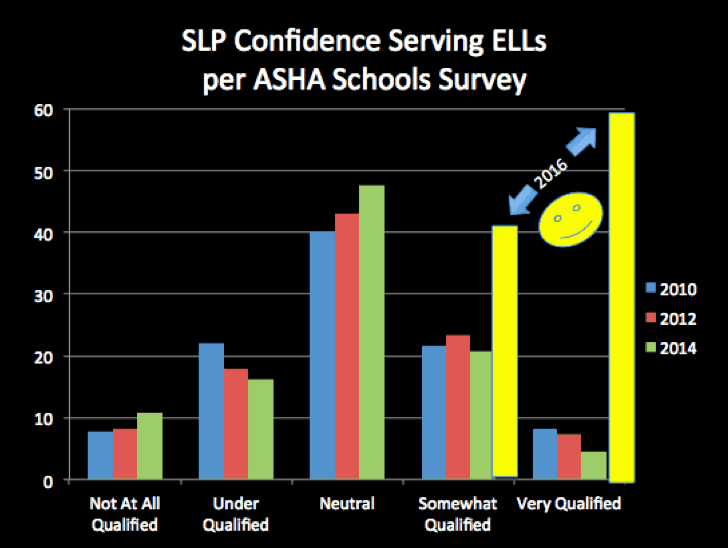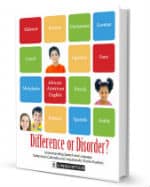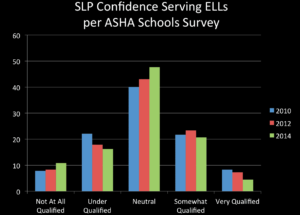At the end of April I shared my dream graph about SLPs working with English Language Learners to those who attended my short course at the California Speech-Language-Hearing Association’s annual convention in Anaheim, California. I call it my dream graph because I overlaid the goals of my mission (in yellow) on the ASHA Schools Survey graph in which SLPs rate how confident they are in working with English Language Learners. This is what that graph will look like when I accomplish my mission—SLPs will rate themselves as VERY CONFIDENT in serving English Language Learners.

SLP Caseloads are Diverse.

We serve diverse caseloads—that’s our reality. That is the reality of pretty much every SLP. Spanish is the second most spoken language in 43 of the 50 states in the U.S. but if we look to the next most spoken language across the states, we really see the diversity. Then we are looking at Arabic, Chinese (Mandarin and Cantonese), Dakota, French, French Creole, German, Hmong, Italian, Korean, Navajo, Polish, Portuguese, Russian, Tagalog, Vietnamese, and Yupik (Blatt, 2014). Wow! That is diversity. And it is diversity that we SLPs can confidently serve.
We’ve covered seven of these languages plus many others in our Difference or Disorder? book.
As a field, we need to gain confidence in working with English Language Learners
Right now, according to the most recent ASHA schools survey, we are not there yet.

In fact, only five percent of us reported in 2014 that we were very confident in serving English Language Learners. Only one in five of us rated ourselves as at least somewhat confident in working with English Language Learners. I strongly believe that our lack of confidence in this area strongly contributes to the disproportionality we see in our special education programs throughout the United States. English Language Learners are over-represented in special education programs throughout the United States. And it’s not because English Language Learners have more special education needs than the rest of the population. It’s because, when we are not completely sure that a student’s errors result from native language influence, we often sign them up for speech therapy because we don’t want to let them fall through the cracks. Think about what this does to our caseloads– and our job satisfaction. When we can confidently say that errors result from native language influence, we can get our students the services that will help them most without putting them in special education programs.
We can effectively work with English Language Learners.
We can change this though. For those of you who work in schools, you have some great summer months ahead of you. Use some of that time to build your skills in working with English Language Learners so you can rate yourself as VERY CONFIDENT in working with English Language Learners.
One of our awesome SLP blog subscribers recently sent us a note asking,
“Do you have ways to prepare for the next school year over the summer months?”
If you want to spend some of your CEU time honing your skills with English Language Learners, take a look at our Difference or Disorder Speech and Language Courses.
We also have other great resources to support your work as a speech-language pathologist.
The Bilinguistics Resource Library contains loads of free resources for working with English Language Learners. We have a community of SLPs that allows you access to all of our courses.
ASHA also has some great materials on phonemic inventories in different languages.




Hello,
Do you offer in-person professional development workshops for school districts?
Thank you,
Jessica
Hi Jessica,
We provide a continuum of services to support our school districts. We provide live trainings, webinar trainings and consultative services. As direct services providers in the schools, former district and regional school leads and parents, we often think of our school-based SLPs. Please contact us at admin@bilinguistics.com, and we will gladly support your needs. Thanks, Jessica.